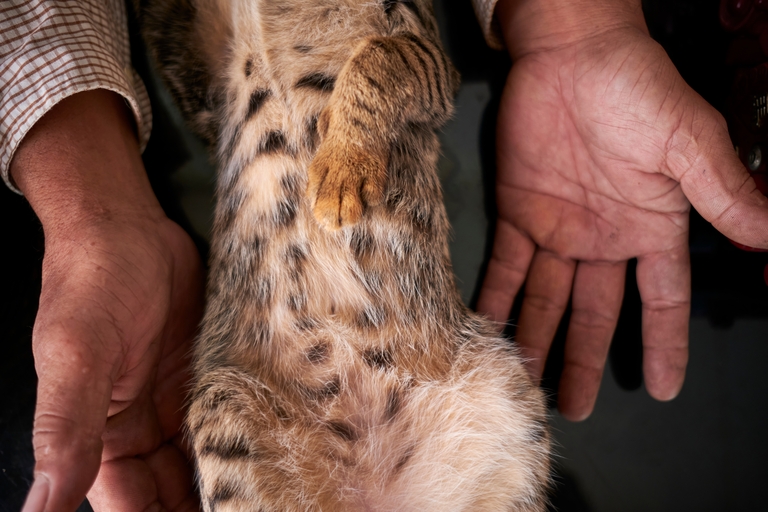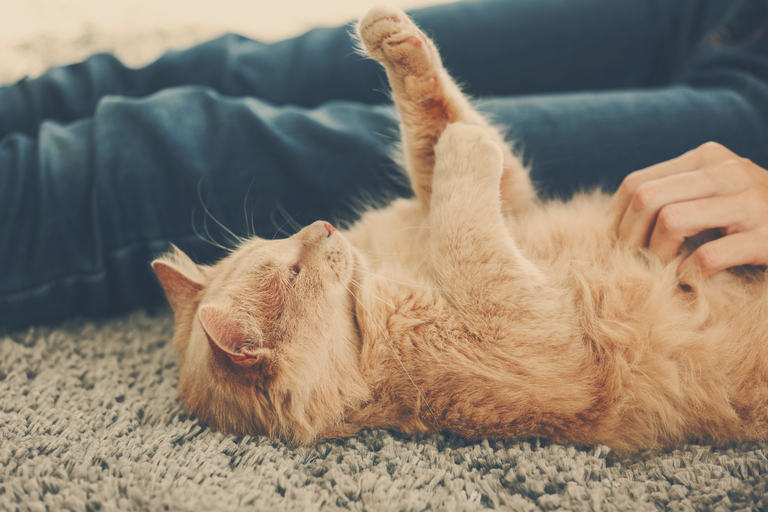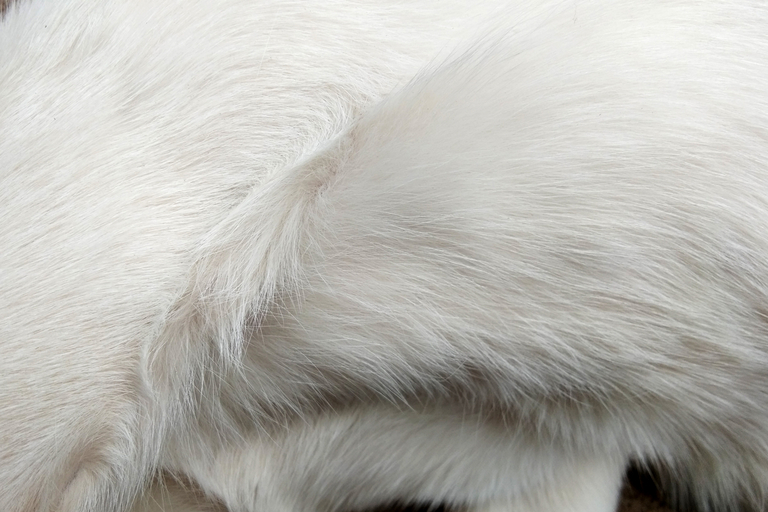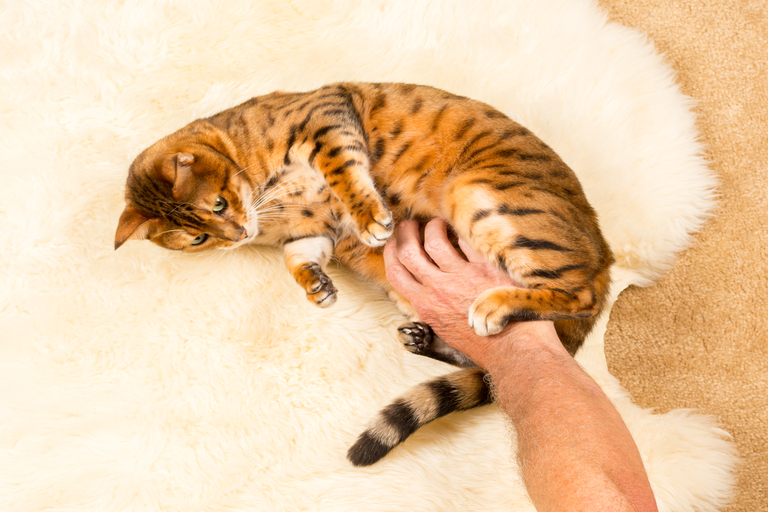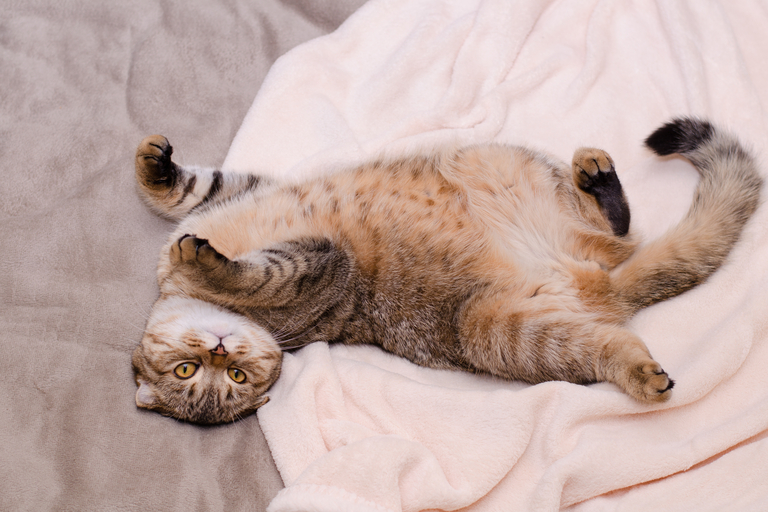The cat’s anatomy is unknown to many keepers. Of course, everyone knows where the cat has its paws, tail and belly. However, the answer to the question of whether cats have a navel is not so obvious. Check if your cat really has a navel and how you can find it if you’ve never seen it on a cat’s belly!
Each animal is built differently. Cats, although they appear to belong, like humans, to the group of placental mammals, they differ, for example, in the lack of a navel. But don’t they actually have this navel, or are you just not able to find it? This question is of interest to many keepers who have the impression that they do not really know their pet. The cat’s navel does exist, but it does not necessarily have the form you are used to in your example.
Did you know you can feel the cat’s belly button?
Did you know that a cat’s navel, although invisible, still exists? Many people believe that these animals, like dogs, do not have navels because they cannot be seen. Meanwhile, cat and dog anatomy is just different from the human anatomy. This also translates into navel related issues. For this reason, even though you won’t notice it, you can easily sense where your purring pet’s belly button should be.
On the one hand, the navel in humans is a taboo subject, and on the other – even an object of interest. The navel is natural for humans, so you are sure that your pet does not have it. In the meantime, as you will see soon, it is quite natural. The cat is not the only animal in which the navel is fully palpable to the touch, but not necessarily visible.
Does the cat have a navel?
Yes of course! However, it is worth answering the question of what a navel actually is. It’s just a characteristic scar that marks the umbilical cord. This, in turn, is the tube that connects the fetus during pregnancy to the placenta, from which it extracts all the nutrients necessary for growth and development. Since the umbilical cord is found in all placental mammals, it also occurs in cats. As it falls off after giving birth, the cat’s navel must also be physiologically, anatomically present.
The umbilical cord is a conduit through which a young cat’s body is supplied with all the nutrients necessary in the prenatal period for the kitten to grow in its mother’s womb. The umbilical cord is flexible, so it does not get tied around the paws or neck of kittens during pregnancy. However, it is possible during childbirth – it results from the fact that the kitten enters the birth canal, and there is no way for the umbilical cord to unravel if a loop forms on it.
After childbirth, in humans, the umbilical cord is cut off by a doctor, and in cats, the mother chews it. This is one of the atavistic elements of labor, so it’s best not to disturb it. At this stage, the kittens do not need the umbilical cord anymore, because they consume food in the form of mother’s milk. The suckling reflex in kittens born on time is so strong that it is enough to fill their bellies and assimilate all the nutrients.
A bitten umbilical cord takes the form of a stump. Usually, the cat will instinctively chew it close to the kitten’s belly, but sometimes it needs additional shortening if it is too long. The stump comes off after some time – alone or licked by the cat. However, the question arises – where do cats have a navel? If there is an umbilical cord stump, it must be attached to something in the end! This is a good line of thought – a cat’s navel is located more or less where a human’s navel is. So on the stomach.
Also read: Cat skin diseases – symptoms, treatment
The cat’s belly button – you need to know this!
Now that you know if cats have a navel, it’s time to find out a bit more about it. Every cat handler will surely be fascinated by the subject of this physiological anomaly. However, check who exactly is the anomaly here – a cat or … you!
Navel and umbilical cord – what does it look like in cats?
Just like every baby has its own umbilical cord, every kitten has one. Anomalies in this matter are extremely rare and often affect the abnormal development of fetuses, and thus – their death or underdevelopment. It is interesting, however, that regardless of the number of kittens in a litter, each one has its own placenta, which should be born with it. Retention of the placenta is very dangerous to the health of the kitten.
A cat’s navel is formed, like in other placental mammals, as a remnant of the umbilical cord. At birth, a kitten cleans her kittens of amniotic fluid, chews on the bag if necessary, and bites off the umbilical cord. Usually she does it instinctively close to the cat’s belly. Additionally, what many caregivers may taste when watching the birthing process, cats usually eat one or even all of the placenta.
If the kitten does not chew the umbilical cord for some reason, the breeder must cut it. First, however, it should block the flow of umbilical cord blood that constantly circulates between the kitten and the placenta to which it is connected. It is best to do it with special handles or even a thicker thread. When the umbilical cord stops pulsing, you can cut it between the two knots. The stump left over by the kitten should be about two centimeters to be safe for the pet.
Cat’s umbilical cord stump – what should you know about it?
You know the answer to the question of whether a cat has a navel – but do you know how it is made? Contrary to human infants, in which the umbilical cord stump may remain next to the skin for up to several days, in kittens it falls off even in the third day of life. It is connected, among other things, with the fact that the kittens crawl on the bedding, and the cat intensively cleans them and licks them on the belly, thus stimulating the peristalsis of the completely immature intestines.
If your kitten cares for her kittens properly, washing the stump is unnecessary – another difference to human babies. Otherwise, or when raising a blind litter after the death of the mother, regular washing, even with clean water, is necessary.
Cat’s belly button – it’s not a scar!
The navel is actually a scar that is perfectly visible in humans and is an obvious part of the body. However, it is a bit different with cats. The stump comes off so quickly that the navel is completely overgrown with skin. There is no trace of it! This means that there is no visible scar on the cat’s abdomen, which again makes it different from humans.
The cat’s belly button is not unique to the animal world
Do you find it strange that the navel is not visible in a cat? That’s for sure, because you’re used to seeing the human navel. Man has to take care of his hygiene, because it is usually a cavity in which dirt and sediment remains. What’s more, she sometimes exhibits it, for example with earrings. In pregnant women, the so far concave navel may come out as the baby grows. It is completely different with cats. But that doesn’t mean the lack of a navel is an anomaly.
On the contrary, the question of whether cats have a navel could also be asked of a number of other placental mammals. It turns out that in the world of these animals, the lack of a visible navel is the norm. Moreover, this scar remains visible only in humans and primates, or monkeys. In all other animals, the navel is covered with skin. This is probably to better protect the body of the wild animal from damage.
How to locate a cat’s navel?
The question remains – where do cats have a navel? Belly, of course, although this is not the most accurate answer you have ever hoped for. Even after shaving a bald cat’s belly, you won’t notice a navel on it. In lean, well-muscled animals, you may also have a problem with feeling it when you try the method that you will learn in a moment. On the other hand, in obese cats it is often more palpable.
To find the navel, you need to touch the cat’s belly. First, find the end of the sternum – this is the hard part of the skeleton on the breast, connecting the ribs on both sides. Behind it there are, among others heart. Run your finger all the way to the end of your breastbone towards your stomach. Then move your hand further until you feel a slight lump under your fingers in the very center. It looks like a small lump, which can alert many caregivers. This is the cat’s belly button!
However, be careful if you can see the protuberance that lies at the site of the navel. This probably means an umbilical hernia. Such a situation always requires consultation with a veterinarian to check that the cat is okay.
Also read: Cleaning your cat’s ears step by step
A cat’s belly button – can it get sick?
A cat’s navel, although invisible, has similar features to that of humans. This is the area where the abdominal barrier is weakened. This means that the navel does not usually overgrow with muscles, because it is located in a place where the abdominal wall is not fully joined. As a rule, it is a weakened place, more prone, for example, to injuries, but also to various overloads. Especially looking at the fact that cats move on all four legs, therefore their belly is constantly under pressure.
The so-called umbilical hernia is not unusual in humans. This is the place where the abdominal tissues extend beyond its shell, creating a characteristic thickening. A hernia can be physiological and may occur as a result of complications during childbirth or incorrect removal of the umbilical cord. In this case, it usually disappears on its own in kittens. In adult cats, it is caused by diseases such as tumors located in the abdominal cavity. It can also arise as a result of injuries, as well as as a result of pregnancy or, for example, obesity.
As a rule, a hernia around the navel requires observation. Slight, if it does not increase in size, does not need to be removed, although it is a recommended solution due to the high risk of deterioration of its condition. On the other hand, a large intestine, in which a significant part of the intestine exits through the opening in the abdominal integuments, is an indication for immediate surgical intervention. Otherwise, the intestine may become trapped in it, leading to rapid necrosis due to the lack of blood supply to the tissues. Further, the cat is at risk of sepsis and even death.
Sometimes kittens become infected as well. However, this mainly applies to litters that live in extremely poor conditions or those who do not have sufficient mother care or are deprived of her. In this case, infection may occur in the healing wound to which the umbilical cord stump adheres. Such a situation requires, depending on the condition of the kitten, disinfection and keeping the area clean, or the intervention of a specialist. It is sometimes necessary to administer antibiotic injections, although this is rarely practiced in such young animals.
To history!
Your cat’s belly button is invisible, which means your cat may have far fewer bacteria on it than you do. Many studies have confirmed that many bacteria accumulate in the human navel. Due to the fact that the cat is overgrown – your pet is cleaner in this area than you, especially when he lives at home!
If you’ve been wondering whether a cat has a navel, now you know the answer to that question. The cat’s belly button is the result of the kittens joining the placenta, which provided them with nutrients from the mother’s body, during the prenatal period. In cats, however, the navel quickly disappears and is not in any way visible, unless its location is emphasized by a hernia. In other cases, the cat’s navel is not noticeable. Did you know cats have a belly button and how to find it? Or maybe you have some interesting facts about cat’s navels? Share them in the comment!

